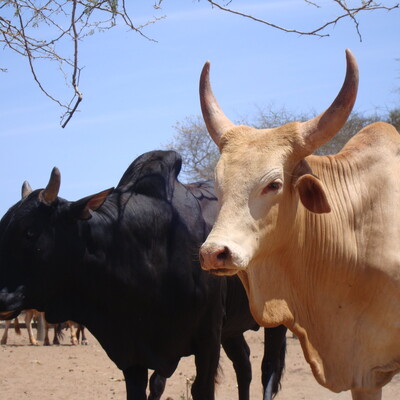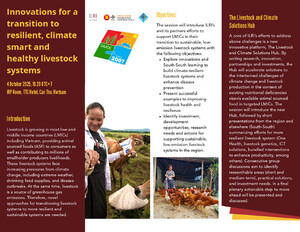
A new study gives insights on Napier (elephant) grass, a fast-growing tropical grass
 Martha Anyango of Homabay County in her plot of improved napier grass (Ouma variety) planted in Tumbukiza holes (photo credit: AVCD/ FIPS R. Jumah)
Martha Anyango of Homabay County in her plot of improved napier grass (Ouma variety) planted in Tumbukiza holes (photo credit: AVCD/ FIPS R. Jumah)
Napier grass, which is also known as elephant grass, is one of the most important fodder crops grown across the global tropics. This grass is the main livestock feed resource for the majority of the more than one million small-scale dairy farmers in East Africa. Its popularity is based on its ease of establishment, high productivity, ability to regenerate after regular harvesting, good quality and year-round availability.
Not much was known about the genetics underlying the rapid growth of Napier grass until recently, when a team of scientists from China and East Africa used DNA sequencing to assemble its genome. Their study findings are published in the journal Molecular Ecology Resources (11 October 2020).
Using a combination of short-read sequencing, single-molecule long-read sequencing and Hi-C chromosome conformation capture technologies, the scientists, who included forage researchers from the International Livestock Research Institute (ILRI), Lanzhou University and Guangxi Animal Institute were able to assemble a chromosome scale genome of elephant grass and found an abundance of information. For example, the study revealed a high copy number of genes, and transcription levels of those genes, involved in photosynthesis and hormone signaling, which may be contributing to the rapid growth of the grass.
The assembled genome was from the variety ‘Purple’, which is popular in China for its purple coloured leaves that are associated with good forage quality. The study revealed a high copy number of some enzyme-encoding gene families related to the biosynthesis of anthocyanidins, a common plant pigment compound which has powerful antioxidant properties that are beneficial to both animals and humans who consume it. The study also found genes encoding flavonoids, compounds that help regulate cellular activity and fight off free radicals, which were highly expressed in the leaves and which may be driving the production of these major anthocyanidin compounds.
The “assembled elephant grass genome could provide a system for studying the diversity, speciation and evolution of this family of grass and offer an important resource for understanding the economically important traits that influence its adaption,” the authors conclude.
Read the full publication: The elephant grass (Chenchrus purpureus) genome provides insight into anthocyanidin accumulation and fast growth
For more information on Napier grass varieties, contact Chris Jones (ILRI) and Jiyu Zhang (Lanzhou University).



















